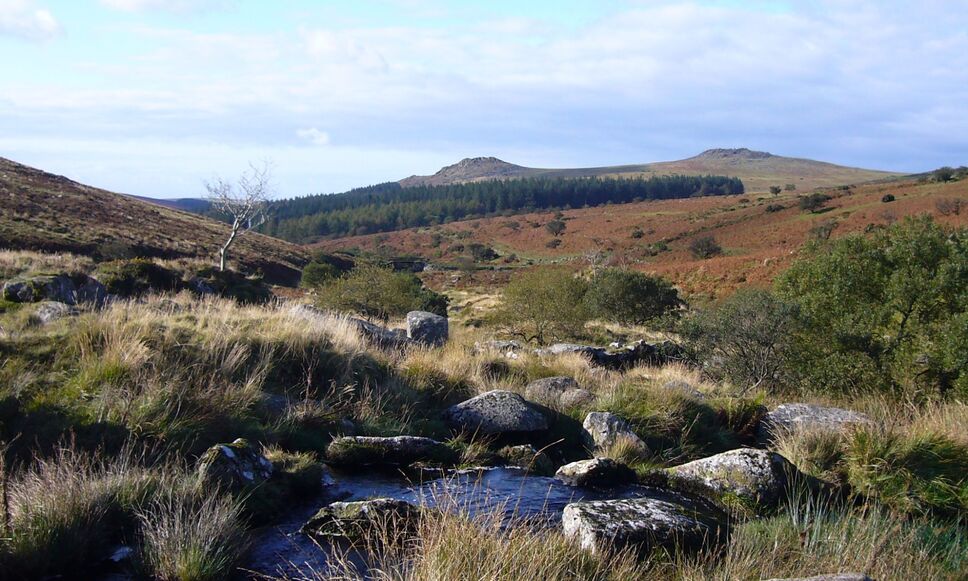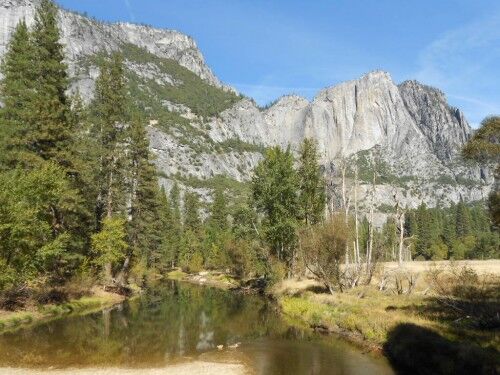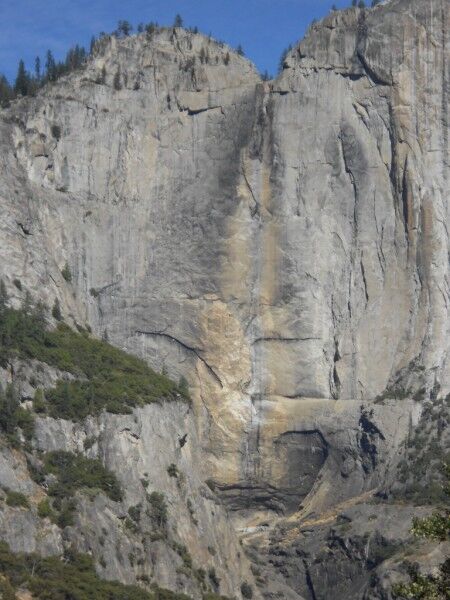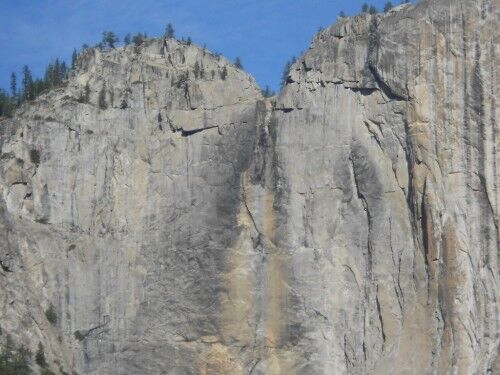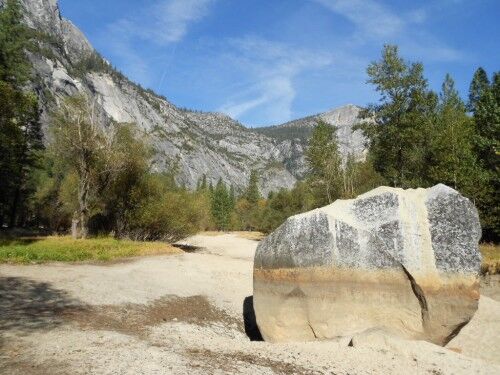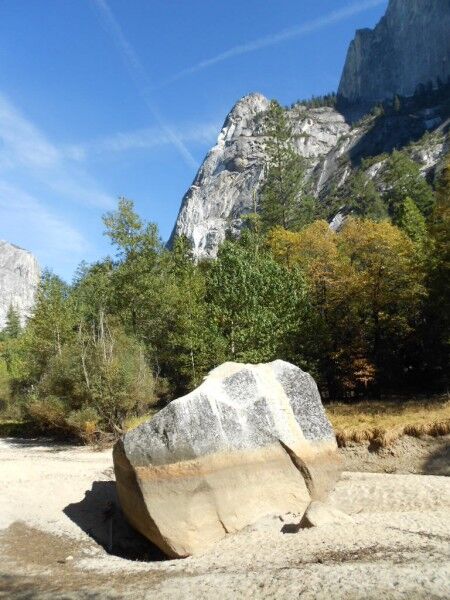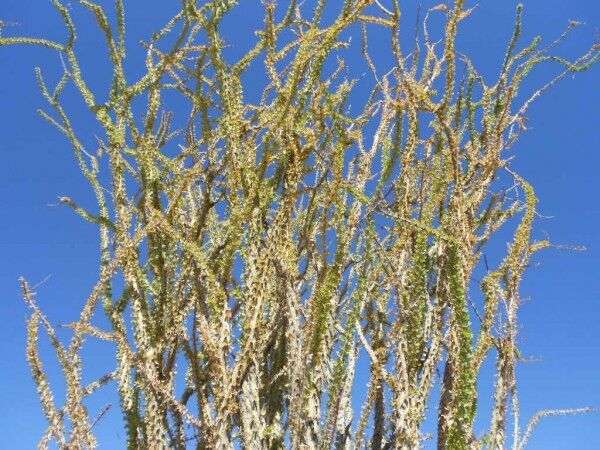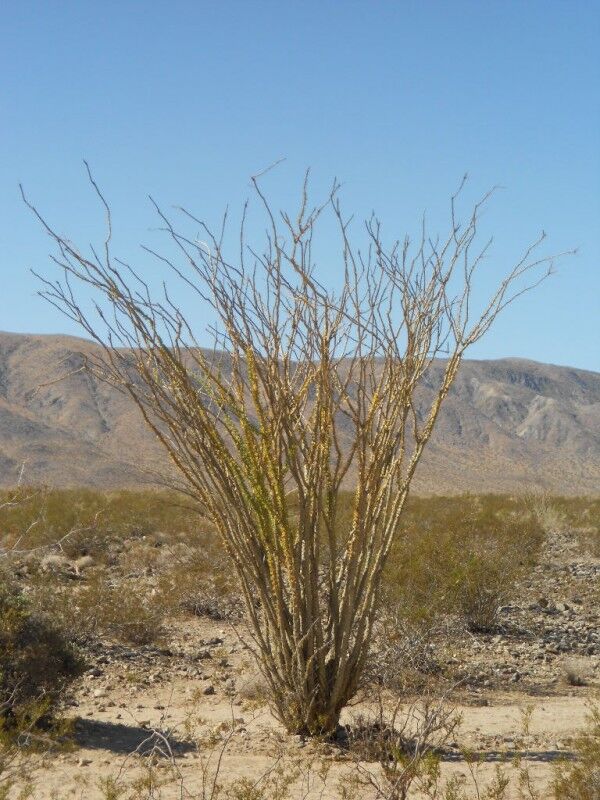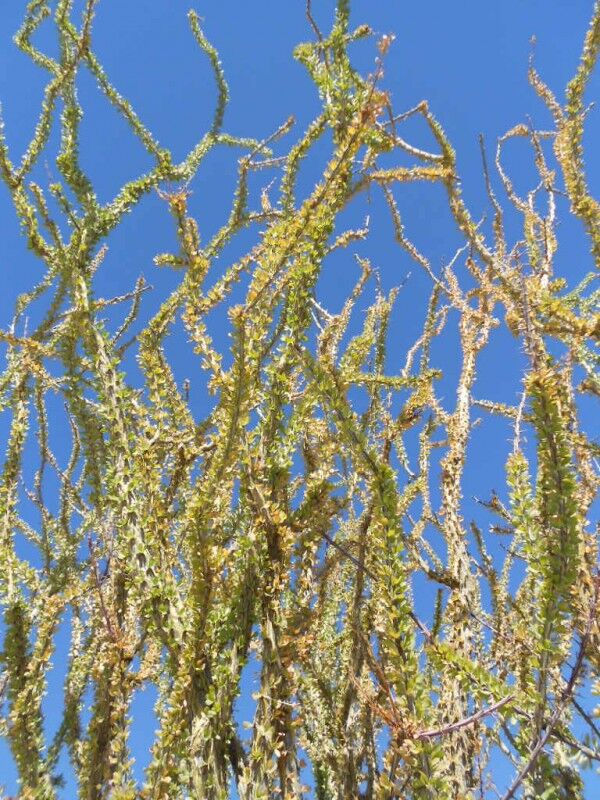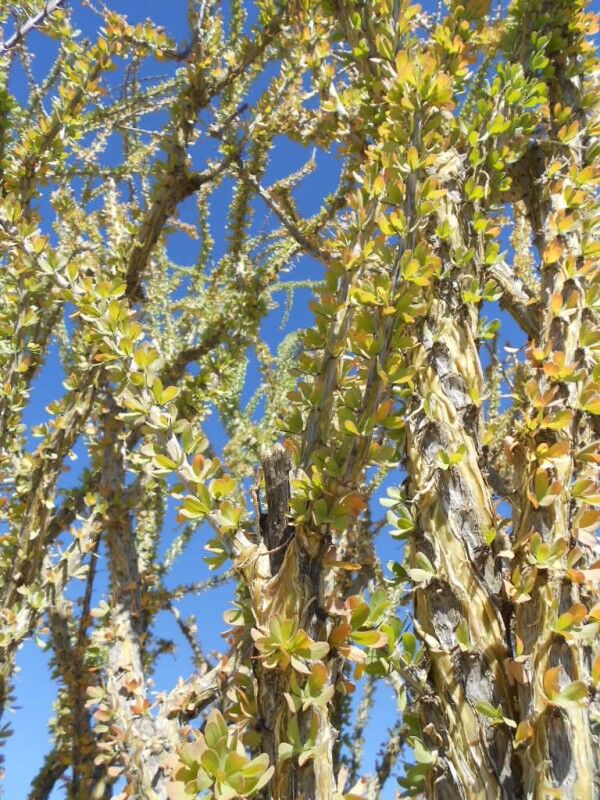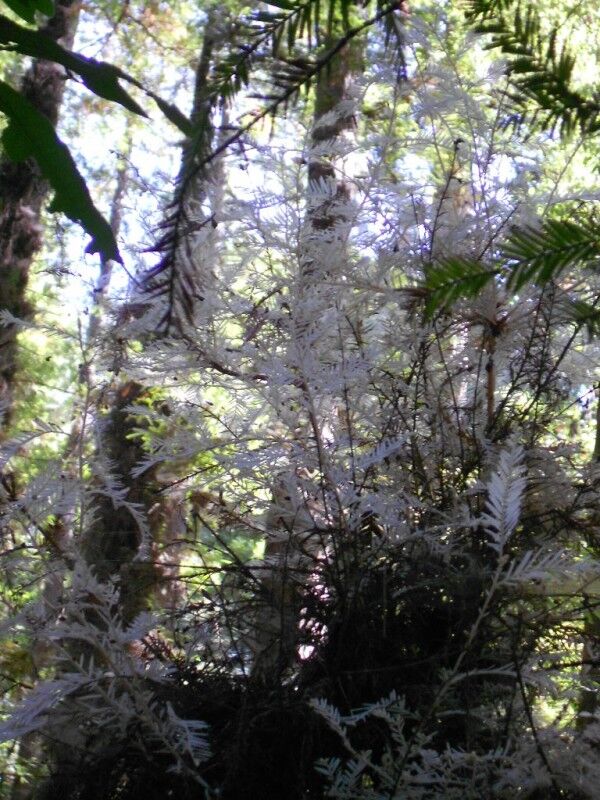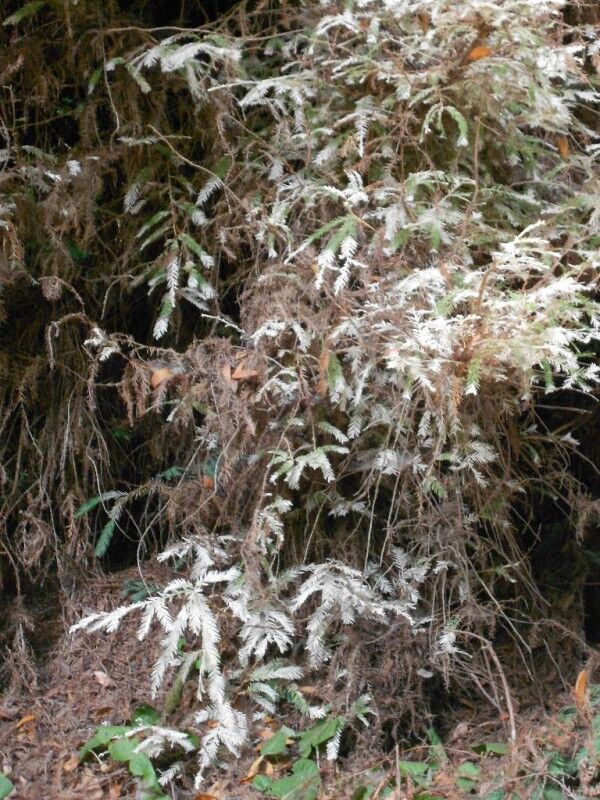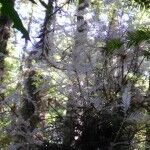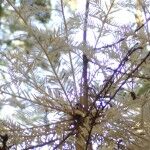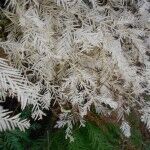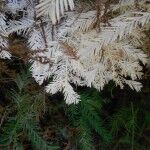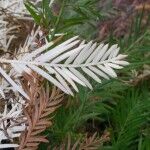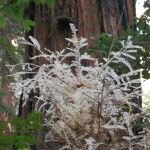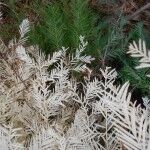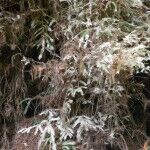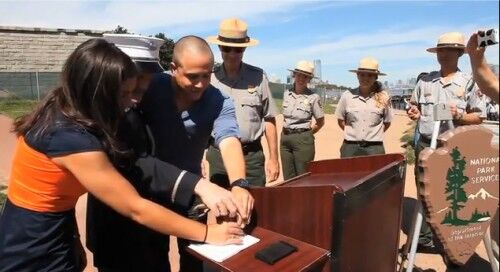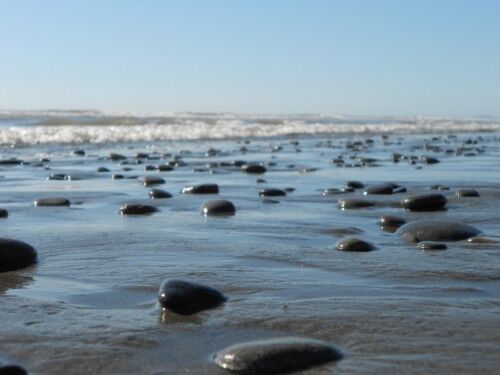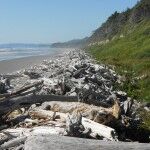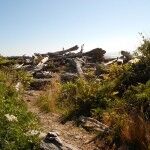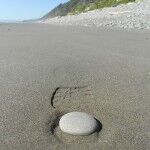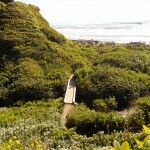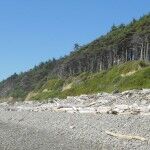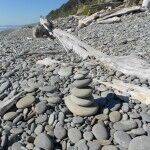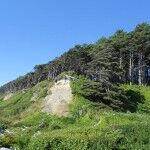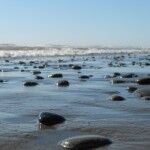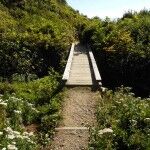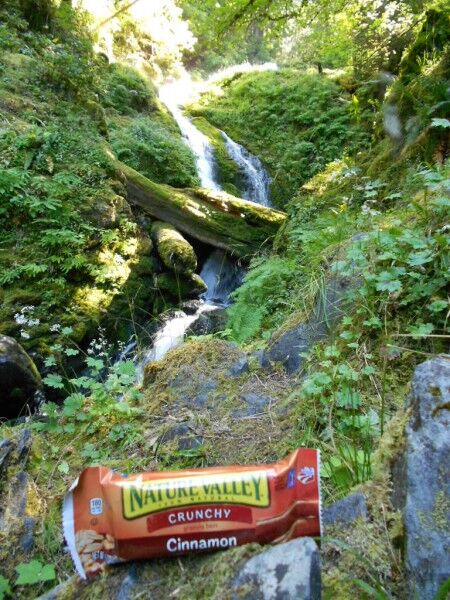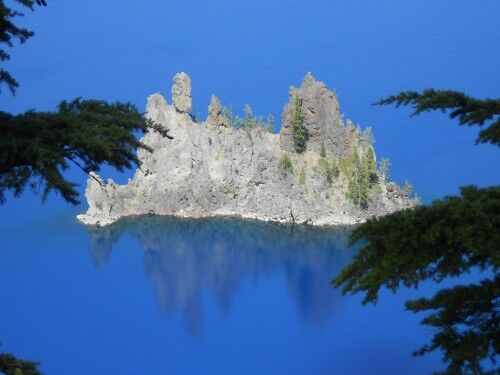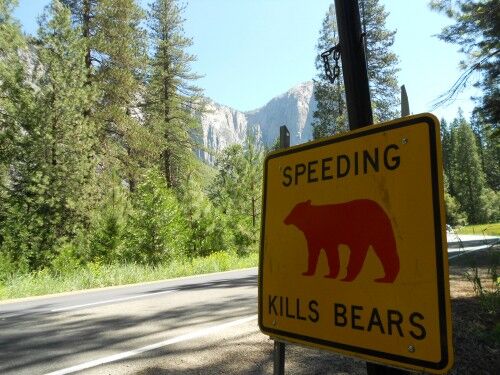While certainly most famous for the Joshua Tree, Joshua Tree national park has a variety of other plant life that is well worth exploring. Just like it’s worth taking the time to stop to see the Ocotillo in the southern part of the park, it’s most definitely worthwhile stopping at the Cholla (pronounced choy-ya) Cactus Garden located in the Pinto Basin (which usually only receive 4 inches of water a year) near the center of Joshua Tree national park.
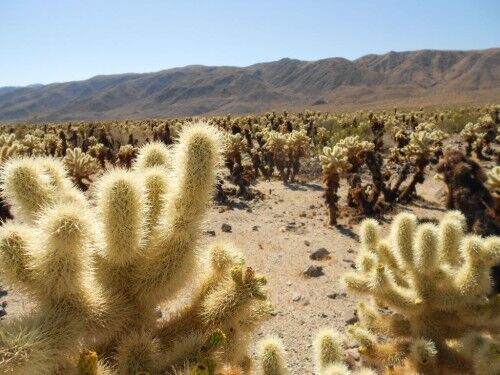
It’s a pretty amazing sight, and the Cholla cactus looks terrifyingly like a cactus that you would never want to mess around with. In fact, there is a great quote on the information sign before entering the cactus garden:
“If the plant bears any helpful or even innocent part in the scheme of things on this planet, I should be glad to hear of it.” — J Smeaton Chase
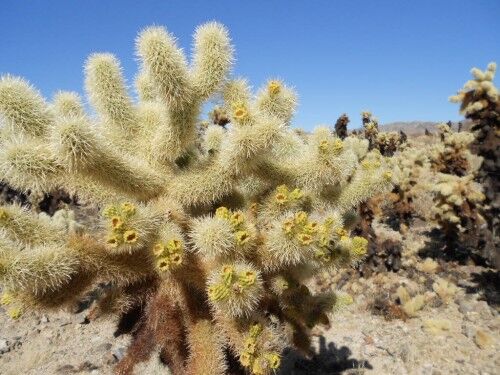
The cactus garden has a short 1/4 mile nature trail that is definitely worth taking, but be sure to leave the dogs behind (they aren’t allowed and wouldn’t fare too well against the Cholla) and keep a close eye on children so they don’t try to touch the cactus (the spines are needle sharp).
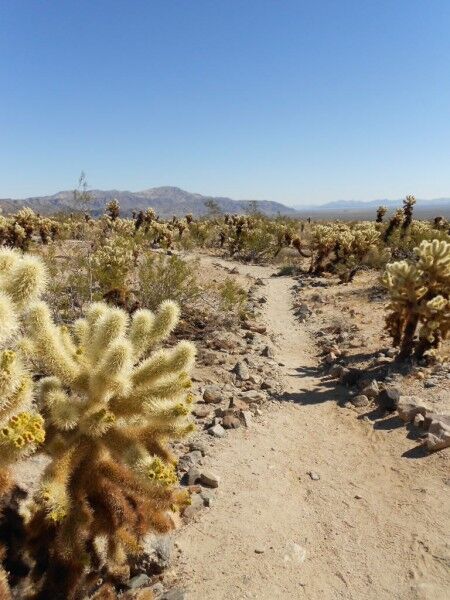
One thing you will immediately notice is that it appears that a fire recently swept through the area burning the base of most of the Cholla in the garden:
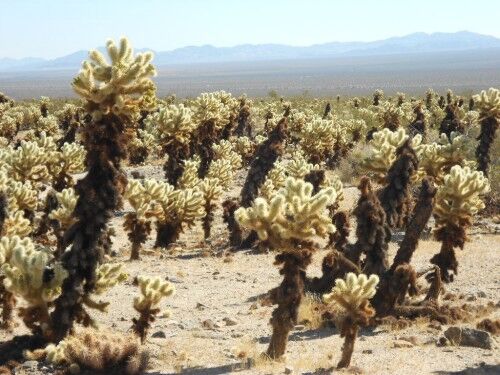
The truth is that this is natural and simply the dead spines of the Cholla cacti, and none of these have ever been burned. Even with the dark discoloration, the plants are healthy with the upper portion of the plant continuing to grow new stem segments. These segments with drop off as the plant gets older which will then produce a new plant.
I had not expected to see the Cholla cactus garden while driving through Joshua Tree, but I’m definitely glad that I made the stop. The sheer concentration of them in this one area is breathtaking and certainly a sight to see. In many ways, they were just as impressive as the Joshua trees, just in a different way. If you find yourself anywhere near the garden while driving through the park, it’s a stop that you won’t regret making even if it takes you a little bit out of your way.
